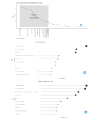Characterization of Global Research Trends and Prospects on Prone Positioning in Respiratory Failure: Bibliometric Analysis
- PMID: 40540635
- PMCID: PMC12204377
- DOI: 10.2196/67276
Characterization of Global Research Trends and Prospects on Prone Positioning in Respiratory Failure: Bibliometric Analysis
Abstract
Background: Prone positioning has emerged as a crucial intervention in managing acute respiratory failure, especially in acute respiratory distress syndrome and patients with COVID-19. Given the increasing interest in this field, it is important to characterize global research trends and key contributors to identify future research directions.
Objective: This study aimed to analyze global research trends, collaboration networks, and research hotspots related to prone positioning in respiratory failure through a comprehensive bibliometric analysis.
Methods: Bibliometric analyses were conducted using CiteSpace and Biblioshiny software on publications up to December 31, 2023, from the Web of Science Core Collection, focusing on prone positioning in respiratory failure.
Results: A total of 1263 research articles were identified, published in 50 countries by numerous institutions. The United States, France, and Germany contributed the most publications, with the United States producing 21.9% (275/1263) of the total. Key authors such as Claude Guerin and Luciano Gattinoni were identified as major contributors to the field. Keyword co-occurrence analysis revealed the dynamic nature of prone positioning research in respiratory failure. It highlighted protective ventilation and COVID-19-related acute respiratory distress syndrome as emerging hotspots, indicating a shift in focus during the pandemic.
Conclusions: This study revealed a rapidly growing body of literature on prone positioning in respiratory failure, especially in the context of COVID-19. The findings underscore the importance of further multicenter clinical trials to validate current practices and refine treatment protocols. In addition, the application of prone positioning in non-intubated patients represents a potential future research direction.
Keywords: ARF; COVID-19; SARS-CoV-2; acute respiratory distress syndrome; acute respiratory failure; bibliometric analysis; bibliometrics; coronavirus; critical care; infectious; lungs; pandemic; prone positioning; pulmonary; respiratory failure.
© Rong Lei, Feng Yue, Chaofu Yue, Zihan Zhang, Xian Huang, Qiaolin Li, Zhigang Yang, Rong Li, Keyi Zhao, Mei Yang. Originally published in the Interactive Journal of Medical Research (https://www.i-jmr.org/).
Conflict of interest statement
Figures






Similar articles
-
Prone position for acute respiratory failure in adults.Cochrane Database Syst Rev. 2015 Nov 13;2015(11):CD008095. doi: 10.1002/14651858.CD008095.pub2. Cochrane Database Syst Rev. 2015. PMID: 26561745 Free PMC article.
-
Comprehensive Global Analysis of Future Trends in Artificial Intelligence-Assisted Veterinary Medicine.Vet Med Sci. 2025 May;11(3):e70258. doi: 10.1002/vms3.70258. Vet Med Sci. 2025. PMID: 40145983 Free PMC article.
-
A bibliometric analysis of research trends in mesenchymal stem cell therapy for neonatal bronchopulmonary dysplasia: 2004-2024.Front Pediatr. 2025 Jun 3;13:1558301. doi: 10.3389/fped.2025.1558301. eCollection 2025. Front Pediatr. 2025. PMID: 40530182 Free PMC article. Review.
-
Positioning for acute respiratory distress in hospitalised infants and children.Cochrane Database Syst Rev. 2022 Jun 6;6(6):CD003645. doi: 10.1002/14651858.CD003645.pub4. Cochrane Database Syst Rev. 2022. PMID: 35661343 Free PMC article.
-
Research status, hotspots and perspectives of artificial intelligence applied to pain management: a bibliometric and visual analysis.Updates Surg. 2025 Jun 28. doi: 10.1007/s13304-025-02296-w. Online ahead of print. Updates Surg. 2025. PMID: 40580377
References
-
- Fan E, Del Sorbo L, Goligher EC, et al. An Official American Thoracic Society/European Society of Intensive Care Medicine/Society of Critical Care Medicine Clinical Practice Guideline: Mechanical Ventilation in Adult Patients with Acute Respiratory Distress Syndrome. Am J Respir Crit Care Med. 2017 May 1;195(9):1253–1263. doi: 10.1164/rccm.201703-0548ST. doi. Medline. - DOI - PubMed
LinkOut - more resources
Full Text Sources
Miscellaneous

